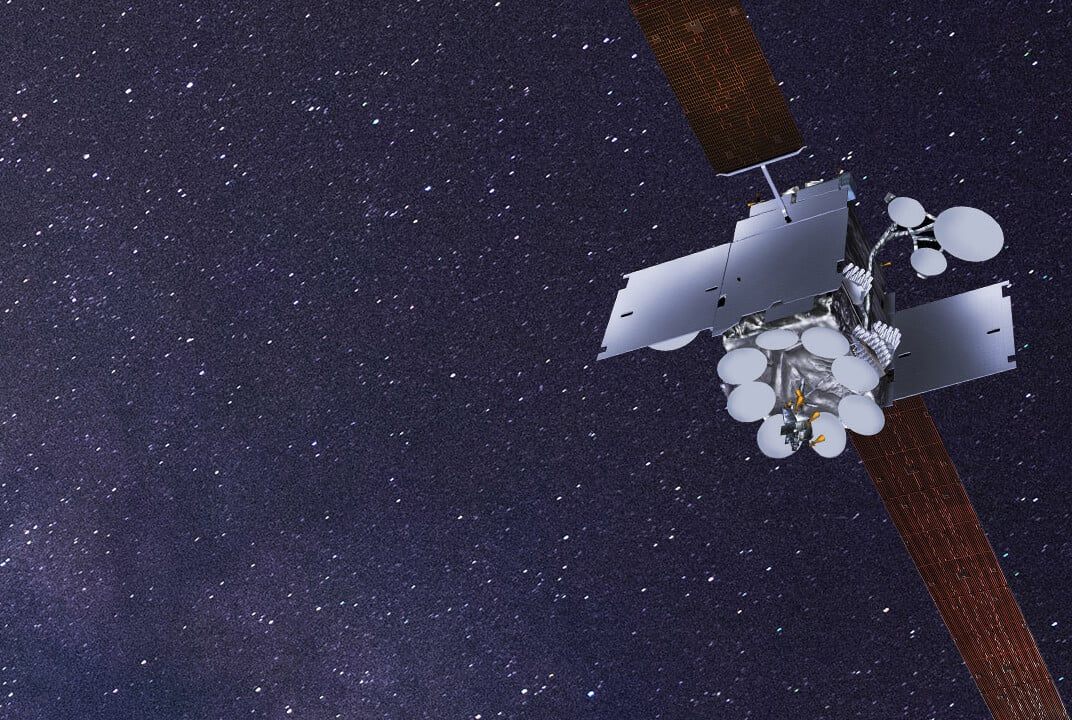Insight | Government-focused SATCOM Innovation – Presenting Real Alternatives
Government-focused SATCOM Innovation – Presenting Real Alternatives
Government
Peter Hadinger, President, U.S. Government Business Unit, Inmarsat takes a look at how Inmarsat is constantly focused on innovation to introduce satellite advancements that benefit government customers.
At Inmarsat we’re very encouraged about the evolution of government/industry partnership that is expected to transform the way military pursues SATCOM acquisitions. We observe closely government senior leadership commitment to the vision of a future integrated architecture that depends upon the reach, resilience and technology modernization of commercial SATCOM (COMSATCOM) as an essential element of mission assurance. As part of this forward-looking path, we welcome pending developments with the Analysis of Alternatives (AoA) now under way within the Department of Defense (DoD).
As part of the National Defense Authorization Act (NDAA) for Fiscal Year 2016, the expectation for the AoA is that the Secretary of Defense will assess the potential for follow-on wideband communication systems to the Wideband Global SATCOM system (WGS); an integrated architecture that will address space, air and ground layer communication capabilities. It also calls for the designation of a single, senior DoD official to procure wideband SATCOM, while approving a pilot program through which the Secretary of Defense would deploy a variety of methods to “effectively and efficiently acquire commercial satellite communications services”.
Yet, while the private sector appreciates the complexities of DoD architectures, understands the critical requirements and recognizes the budget challenges, it remains evident that COMSATCOM will play an essential role in this integrated SATCOM architecture of the future. Industry is eager to continue to provide input to military decision-makers as part of this process. We are not “cooling our heels” and essentially waiting for “results” with respect to the AoA.
At the Satellite Industry Association’s recent DoD Commercial SATCOM Workshop in Arlington, VA, I took part in a panel discussion featuring several senior government and industry leaders, and I spoke in detail about Inmarsat’s position here: We are in a competitive industry with capital at risk 24/7/365. For us in the industry, our own ongoing analysis of alternatives happens all the time. We constantly consider new options with regard to technologies, acquisition models, service delivery, etc. that are vital to our business. We must adapt in real-time to changing market conditions, whether the government or other influencers are driving the shifts.
With this in mind, the clearer and sooner the signal from DoD as to what roles U.S. government will (and just as importantly will not) assume, the more likely it is to influence our analysis and the alignment of our investments with real opportunities for commercial augmentation. With concrete and expedited information, we will be better positioned to plan and execute accordingly. Through specific, actionable details, we can respond by quickly introducing the satellite advancements, which fit in with the blueprint, while not muddling the picture with capabilities that do not. In contrast, a drawn-out AoA scenario that concludes with vague statements, i.e., “the DoD should ‘consider’ commercial alternatives …” will not lead to much of any impactful, partnership-benefiting results.
Learning from the past to build the future
Decades ago, the U.S. government procured a government-designed and built network that included rack-sized custom modems and transcontinental communication cables to support military operations – a model not unlike MILSATCOM. Later, it layered its own wavelengths on commercial fiber and a custom network – leased capacity through a model that resembled COMSATCOM of the past two decades. Today, fiber is ubiquitous and the government customer only has to ask for an Ethernet connection with a certain quality of service level – no leases necessary.
Does that sound like Inmarsat’s vision of SATCOM as a Service? It should. Because that is exactly what it is.
Some feel that government should get out of the SATCOM business entirely. Not just for the sake of saving money, but for boosting resilience and performance. However, going “cold turkey” could prove disruptive to the mission. There are, of course, legacy antennas and modems, operating in legacy bands. And if there is anything we know about legacies, it is that there is plenty of pushback when something new – even if it is better – is introduced to the environment.
That is why we believe in a balanced approach including both MILSATCOM and COMSATCOM will depend on a strategic relationship with commercial operators. And that is why clear and timely information about the AoA will serve such a critical purpose. The clearer the DoD’s intent is communicated, the easier it will be for us in the industry to invest alongside government’s transition plans and will improve efficiency and effectiveness while establishing the resilience, reach and performance benefits of a rapid technology modernization.
The Air Force has expressed a keen interest in bringing commercial operators into the AoA initiative, to determine the right way forward, rather than simply buying additional DoD-owned satellite assets. Again, we are highly encouraged with this direction and are more than up to the task. Having served the government sector for more than 35 years, Inmarsat provides a trusted network of global, mobile mission-critical SATCOM services that are highly reliable, secure and affordable, seamlessly augmenting and enhancing government capacity anywhere in the world, anytime.
We have given military customers the access priority when and where they require it. We have been doing that worldwide on our L-band and now on our end-to-end commercial Ka-band network — Global Xpress SATCOM as a Service. This is not a stack of viewgraphs of some utopian future, but an integrated system of systems that forms a global always-on network, which enables rapid connectivity anywhere – today. Buying this capability as a single service with guaranteed availability conveys significant advantage compared to piecing local fixed networks together for worldwide coverage.
The government seems to realize that it can take advantage of COMSATCOM. More so, with a clear AoA signal from U.S. government, we will make sure that our investments include the capabilities needed to ensure that DoD gets the resilience, reach and performance it expects.
Our government customers are dedicated to service and national security and safety – priorities that are fundamental to our business. We bring the benefits of optimal reliability, ubiquitous global coverage and diversity of assets – trusted and innovative capabilities well matched to government customers’ evolving and special needs and where lives are at stake whether on land, at sea or in the air.
Quick download
Global Xpress SATCOM as a Service
About the author
Peter Hadinger leads Inmarsat’s business unit responsible for all U.S. Government sales and programs. He has recently been responsible for developing the government-focused capabilities and services of Inmarsat’s new Global Xpress program. Previously he spent 30 years as a leader in technology development, engineering and government spacecraft programs at Northrop Grumman. He holds multiple patents in advanced communications.
Peter’s diverse regulatory and policy background includes leadership roles in the WTO Telecom Services Agreement, the FCC World Radio Conference Advisory Committee, the President’s National Security Telecommunications Advisory Committee and a fellowship in the U.S. Senate.
Peter received his BSEEE from California State Polytechnic University, an MBA with emphasis in finance and strategic planning from George Mason University, and serves on engineering advisory boards at Virginia Tech.


